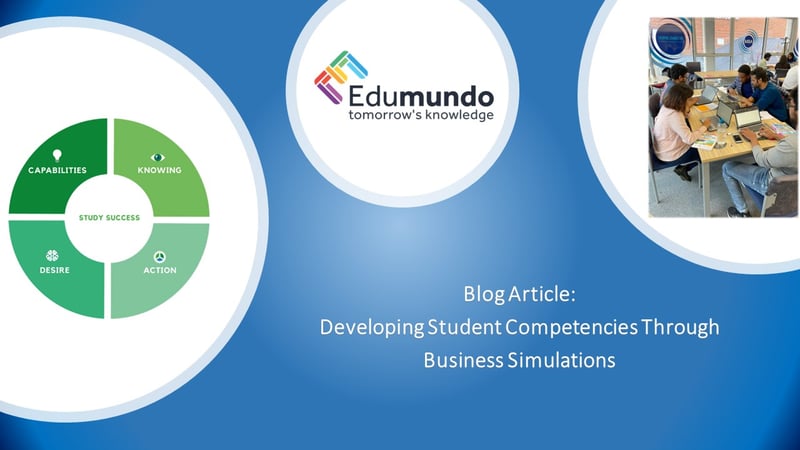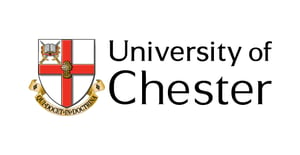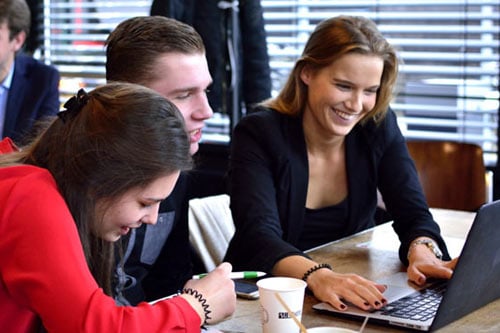On page two of this article we take a look at Shauna and Renata's approaches to teaching Generation 'Y' and 'Z', as well covering a couple of great questions from the Q&A session we held towards the end of the webinar. If you missed page one of this article, click here.
Experiential Learning for Generation 'Y' and 'Z'
"We did some research with employers and the feedback was that they weren't getting graduates with good skills in working with others. This informed our experiential learning strategy and is core to how and why we're rolling out the simulation to a much wider cohort and number of courses: to equip students with the right skills for future graduate employment."
Shauna Jones
One key motivation behind using digital learning technology is to meet the expectations of an emergent digitally native demographic of students who have come to expect some degree of online teaching in their studies. Renata explained how the simulation helps meet this expectation:
"We get very positive feedback from students on the interface and the usability of the simulation and this really appeals to a digitally native segment of students. This does not mean it's easy to play! But what they like is that they have a lot of options to make decisions and calculate outcomes. They feel like they're supported throughout the whole process."
At Beedie Business School, Shauna together with her Experiential Learning Coordinator, Dr. Desirae Stack came to the decision to use business simulations, as well as other skills-development initiatives following a research project focusing on feedback from graduate employers.
"We did some research with employers and the feedback was that they weren't getting graduates with good skills in working with others. This informed our experiential learning strategy and is core to how and why we're rolling out the simulation to a much wider cohort and number of courses: to equip students with the right skills for future graduate employment."
Shauna also encourages her students to use the Edumundo Helpdesk. Here students can send questions or queries about the simulation and Helpdesk staff will respond to them very quickly and across the week (including weekends).
"Using the Edumundo Helpdesk is so important. Some students are sometimes a bit shy or they try to figure it out for themselves but when they do reach out, the Helpdesk team has been fantastic. Their responses to queries and advice on the simulation are very informed and helpful."
The Modern CV - Students Using LinkedIn
Another feature both Shauna and Renata will be undertaking through Edumundo is the roll-out of completion certificates for thier students who take part on the simulation exercise. Students can promote their simulation experience and be endorsed for their skills by sharing the certificate on LinkedIn, as Leon explained:
"Many say that the Modern CV these days is LinkedIn...having these certificates digitally available in which students are able to and encouraged to share them on LinkedIn gets them to think about their online professional presence."
This feature is proving to be very popular among students using Edumundo simulations with weekly posts being shared and subsequent endorsements being added to their profiles.
Placing Students into Teams
The panel also discussed how Shauna and Renata selected students for each team. Here was Renata's approach:
"Our students decide on their teams. They learn a lot about their own traits and team members' traits during the experience and then they assign particular roles within them based on these traits and skills."
Shauna's approach differed: she looked at student demographics and experience to determine the team setup.
"We select teams based on diversity of international backgrounds and experience. The students complete a survey beforehand of what they're background is, what credits they have, any industry experience etc."
This helped ensure teams were fairly balanced in terms of their academic and professional experience.
The Q&A Session
We fielded some great questions during the webinar. Here were a couple of examples of those asked to Shauna and Renata.
- "I get the impression the "teams" are set up according to her [Shauna's] ideas of diversity. This is clearly not true in the real world, where teams would preferably be structured to address a specific objective. Structure follows strategy and that applies to the building of teams, as well."
Shauna: "In the past we have looked at different functions. In this case, we felt this was the easiest way to ensure diversity in the group, to ensure we have a variety of skills and experience within the group. I use it context-based and not my thoughts on what diversity is supposed to be." - "Was it a challenge to get approval from your Information Technology people to use these simulations? It takes forever at our university to get approval from our IT folks to use any new software."
Renata: "When there is no software involved it's not as complicated. In this case the simulation is played online without the need to download any software. There is a compliance list which our IT team require to check the background of Edumundo but it was a relatively easy process in the end."
A big thank you to all our participants and Shauna and Renata for being our guest speakers. The session highlighted some great examples and differing approaches to using simulations in US and Canadian Higher Education.
If you are interested in finding out more about our business simulations, click on the button below, otherwise sign-up for updates on future webinars further down.
DID YOU MISS THE WEBINAR? DON'T WORRY...
View the recording or check out our recap video
LOOKING FORWARD TO OUR NEXT WEBINAR? KEEN TO FIND OUT MORE?
Sign-up to our newsletter for updates.



.png?length=300&name=unnamed%20(11).png)
.png?length=300&name=unnamed%20(7).png)
.png?length=300&name=unnamed%20(8).png)
.png?length=300&name=unnamed%20(6).png)

.png?length=300&name=unnamed%20(10).png)
.png?length=300&name=unnamed%20(5).png)
.png?length=300&name=unnamed%20(9).png)
.png?length=300&name=unnamed%20(4).png)
.png?length=300&name=unnamed%20(2).png)
.png?length=300&name=unnamed%20(1).png)
.png?length=300&name=unnamed%20(3).png)
.jpg?length=300&name=unnamed%20(2).jpg)





.png?length=300&name=loughborough-university-logo%20(small).png)





